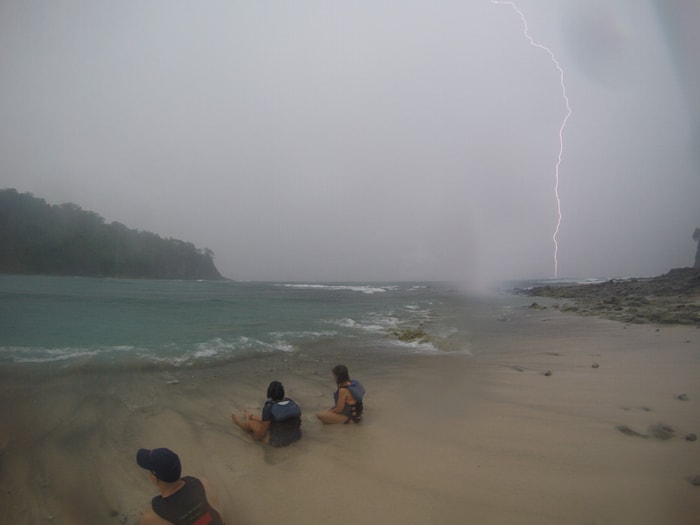SÁMARA, Guanacaste — We were talking about “Jurassic Park,” the dinosaur movie set on an island in Costa Rica where everything goes horribly wrong, when everything started going horribly wrong.
“Oh, my God, what are they doing? That’s the worst place to be,” said our kayak guide, Francisco “Paco” Goldenberg, spotting two guys who made the crossing from Sámara to Isla Chora without a guide. They were headed straight for a big field of rocks with heavy waves behind them on a deserted island where the rest of us had beached safely on sand.
Paco ran toward them, whistling, trying to wave them off, but it was too late. The guys’ kayak flipped them onto the rocks in shallow but turbulent water.
“I’m going to go assist them,” Paco said, running to grab his own kayak and paddle out to them. Paco is a 34-year-old native who’s been doing kayak tours with Ticos Surf School since he and two of his childhood friends cofounded it in 2007. He speaks excellent English, he’s an expert paddler and he’s not bad in a crisis.
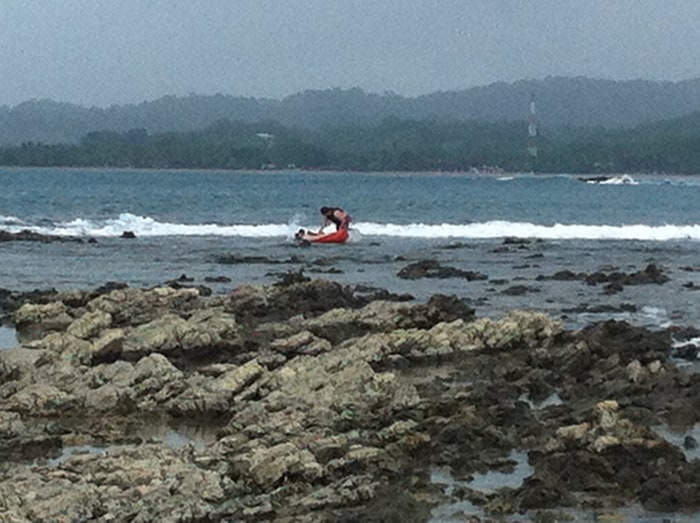
The guys stood up and tried to drag the kayak to shore on the rocks, barefoot (the same thing I would have done), but Paco quickly paddled out to where they were and told them to put the kayak back in the water and follow him to the beach. They did, and the two guys staggered onto the sand happy, with nothing more to show for their navigation error than a couple of cuts on their arms and legs.
Our cast in this castaway tale now numbered roughly a dozen, maybe 14, and those of us who weren’t involved in the shipwreck drama were absorbed in our scrutiny of other people’s problems.
And suddenly all the rest of us developed a problem of our own.
It started raining, which is very common in the afternoon in Costa Rica, but it didn’t turn out to be a pitter-patter rain that we could just ignore. The heavens opened violently, and cold, torrential rain began pelting us, while lightning struck the water all around us, punctuated by shockingly loud thunderclaps.
We scrambled for shelter, but there was no shelter to be found. We all moved instinctively toward the big cliff, but it leaned the wrong way, and none of the trees sprouting from it were dense enough to stop rain.
Paco said heading for shore in the kayaks now was not an option because the paddles were made of aluminum, a lightning magnet — not to mention the degree of difficulty of paddling a tiny boat in a heavy thunderstorm in a heaving sea.
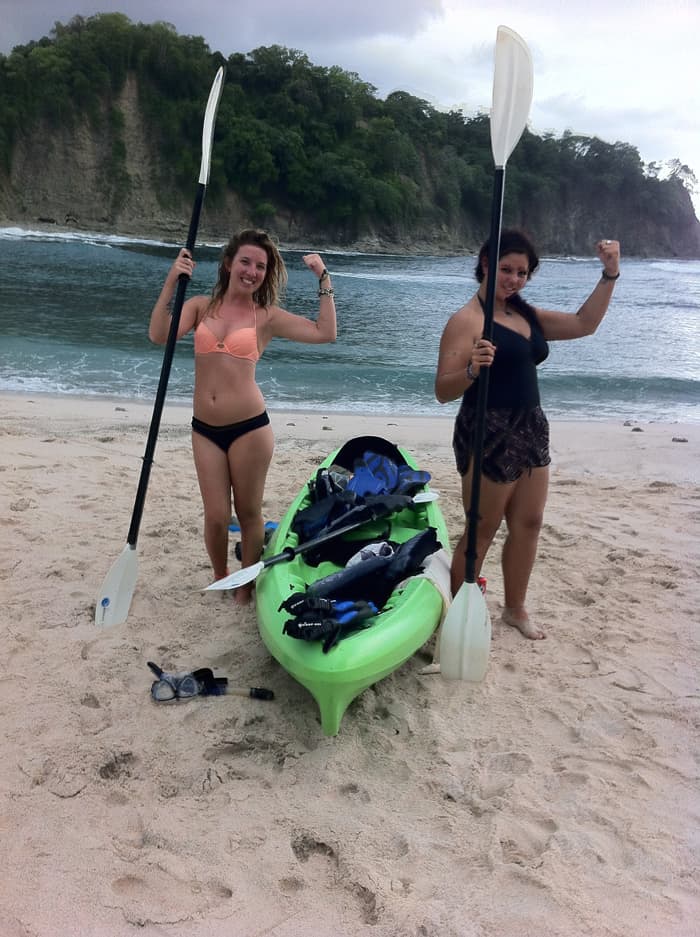
“Let’s go to the cave,” I said.
“I was thinking about that,” Paco said.
The two of us scrambled barefoot on the bedrock to the tiny cave — a little tunnel in the rock, a cave with two openings very close to each other, with a floor of soft sand. It looked like a good shelter.
We alerted the ladies, Kaitlyn O’Connor, 25, a nurse and children’s yoga instructor from Ringwood, N.J., and Nadia Jeljeli, 23, of Manchester, England, a travel enthusiast and insect lover. The four of us crouched inside the little cave, sitting cheek to cheek, remarking on this unexpected turn of events.
Paco had pointed out the squall over Sámara earlier, but none of us had any clue that a huge thunderstorm was about to move over this island and park for an hour, dumping immense amounts of rain, with a startling audiovisual display of lightning and thunder. Paco said his guys always check the weather report, and they expected rain but not a thunderstorm.
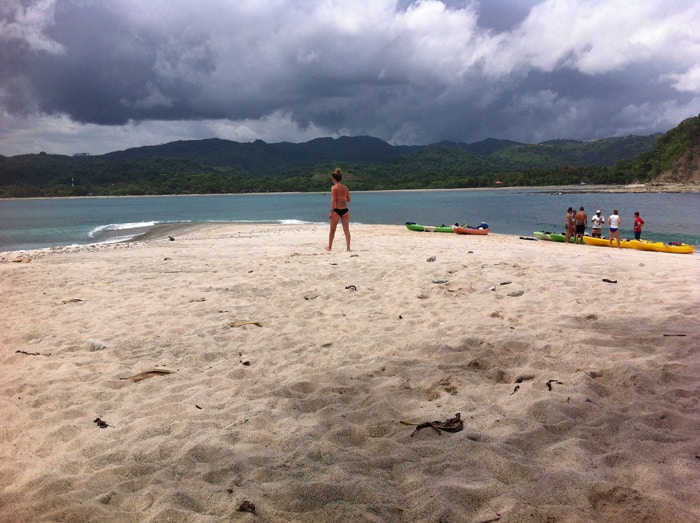
As soon as we had squeezed into the cave, a rock the size of a grapefruit fell onto the sand at our feet with a heavy thud, accompanied by a scattering of small, sharp stones, a couple of which fell on my bare toes. I scooted backwards, and everyone else scooted to make room.
Paco said the mountain was eroding, and he pointed out that the erosion was plainly visible on my right knee, where brown water thick with sediment was dribbling from a rivulet inside our shelter and running straight down my shorts.
Our hearts thudded when a boulder the size of a watermelon fell in nearly the same place as the other one, also accompanied by a shower of sharp debris. We were witnessing a rockslide in slow motion, and we were on the wrong side of the rock — underneath it.
“Okay, we’re getting out of here in 1, 2, 3,” said Paco, and the four of us quickly exited the cave.
We returned to the cliff, where the crowd was now dispersing because there was no shelter there. Paco pointed out that the cliff had sprung little waterfalls, which were now dislodging streams of pebbles down the hillside — miniature rockslides that could easily turn into larger rockslides.
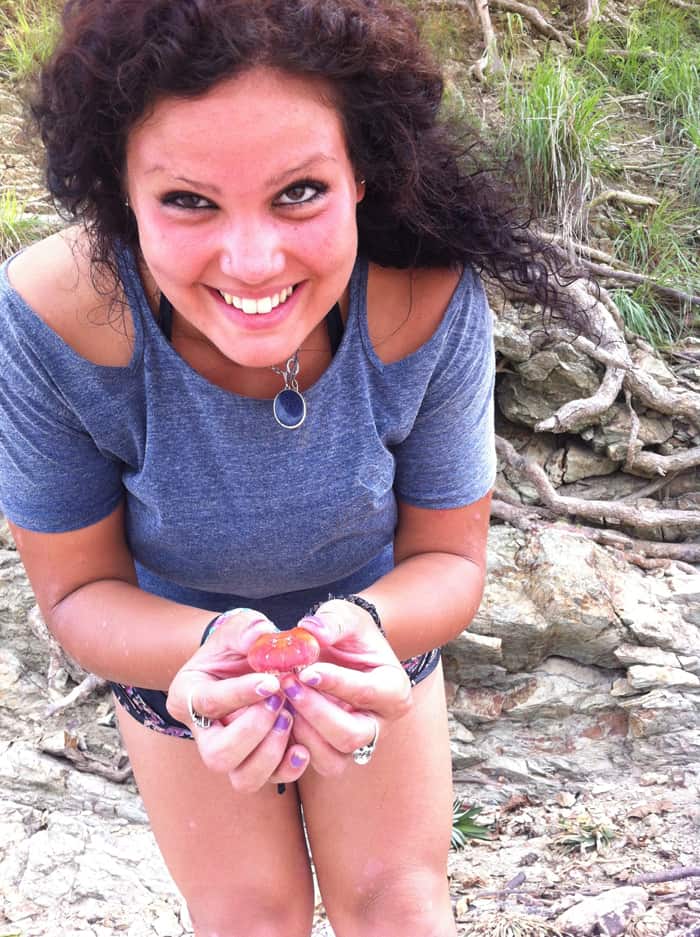
It was like watching a mountain-sized ice cream cake melt in the rain.
Paco turned to look at the other shore and pointed out two big waterfalls that aren’t normally there.
“I’m surprised this island has been here so long,” I said, “if so much of it falls apart in one storm.”
We eventually figured out that the safest place to stand was on the beach, but the warmest place to be was in the ocean.
The rain was cold, and I was freezing. I was wearing a T-shirt under a snug life jacket, which trapped body heat in my core, but my arms were so cold I crossed my arms and clasped them tightly in my hands. For a while I tried jogging around the beach to stay warm.
“If worse comes to worse,” Paco said to somebody else, “if it gets dark we can paddle straight for land” (pointing to the nearest beach on the other side of the channel) “and call for a truck to pick us up.”
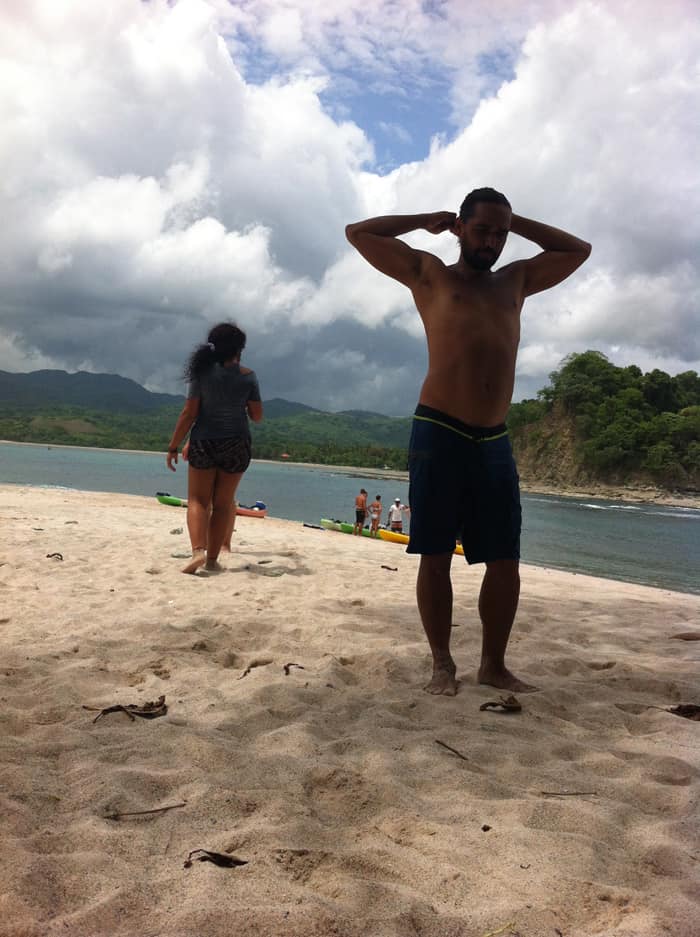
I was wary of the ocean because of the lightning, which was striking the ocean several times per minute, and because I understand that water is an excellent conductor of electricity.
But when I walked into the surf, it felt like a delightfully warm bath. The difference in temperature between the warm ocean and the cold rain was startling. I told everyone that if they were cold, the ocean was warm. But it was a deal with the devil: If you go in the ocean just to warm up, you’re more likely to be electrocuted.
I asked Paco if being in the ocean was dangerous because of the lightning, and he shrugged like it didn’t appear to be any more dangerous than anything else going on right now.
I asked him how many times this had happened to him before. “Never,” he said. His guys always check the weather charts, and if there’s a storm moving in they refuse to rent kayaks, even if customers are clamoring for them. But today was such a beautiful day, and the only thing predicted was some rain.
I finally gave up on the safety of the beach and surrendered to the warmth of the ocean, lightning be damned. I floated out past the crashing waves where I could float in my life jacket and be warm and relax.
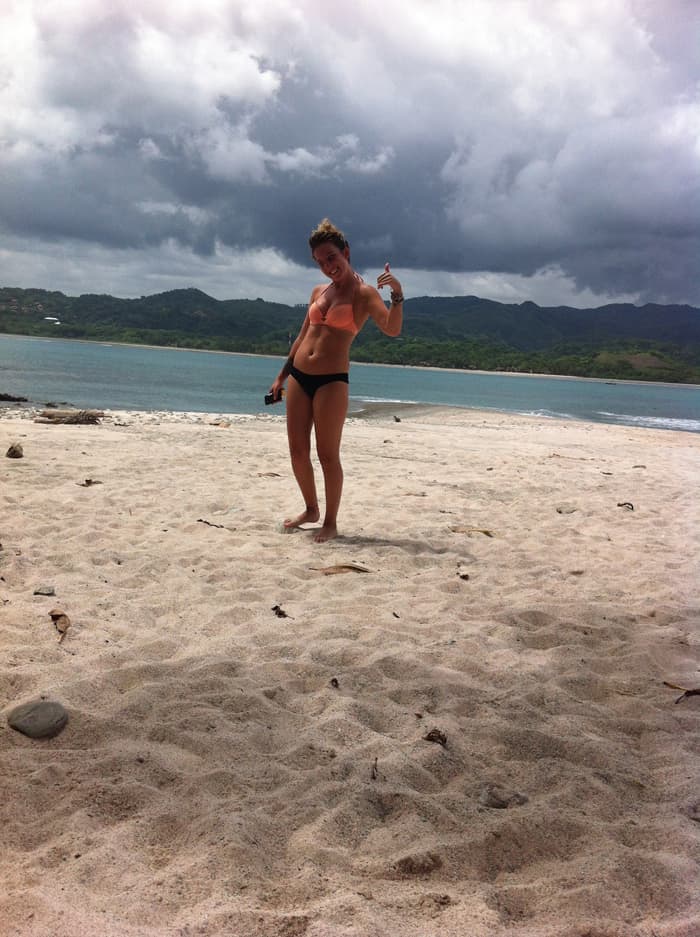
After an hour or so, we noticed that the skies on the horizon turned blue. The rain stopped falling so hard, the thunder became more distant, the clouds started to clear, and best of all the lightning stopped striking the water all around us.
We decided to paddle home.
The rest of the castaways on what someone dubbed Gilligan’s Island, roughly 10 people with one guide between them, headed for the nearest beach across the channel, what Paco called our “worst case.” I asked him what we were going to do.
“We’re going back the way we came,” he said.
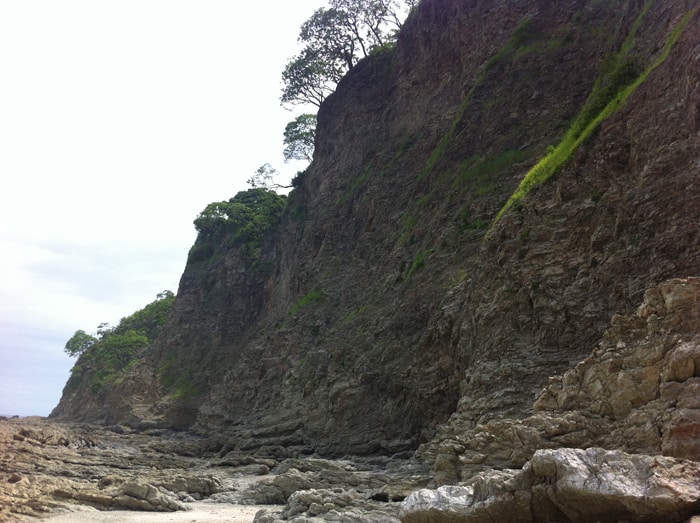
We decided to switch boat partners, putting the redoubtable, dark-haired Nadia in front of the kayak I was supposed to steer, while blond, fearless Katie took the front seat in Paco’s boat.
Paco launched Nadia and me into the surf with his body, telling us to paddle left. We paddled like hell to escape the breaks close to shore, never looking back. But after 15 minutes or so, Paco and Katie caught up and passed us.
I forgot to mention that before we were stranded by a tropical storm on a desert island, we enjoyed a beautiful day of ocean kayaking, snorkeling, pineapple, bananas, water and four beers (brought by moi) for only $35 each.
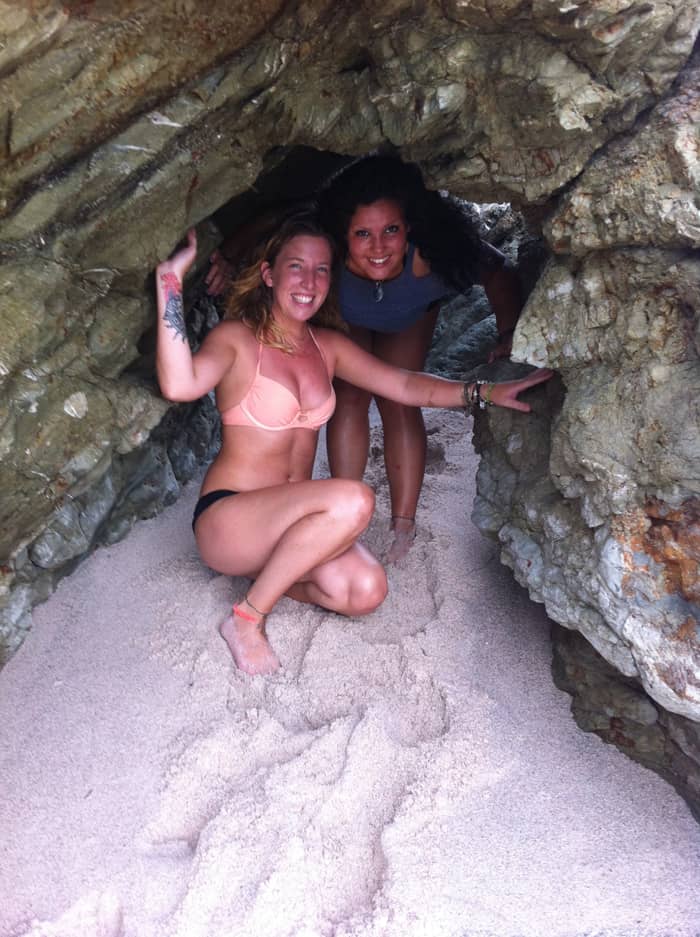
We paddled wearily for home — and warily, as Nadia was very careful not to steer into the big swell that kept breaking in front of us, saying we had to go left, something she had learned from Paco. This turned out to be good advice, and we paddled safely to our destination, just like we knew what we were doing.
When we were finally within landing distance of Playa Sámara, Paco told us to wait while he beached his boat with Katie and gave us the signal to come in.
We watched them make it to shore and pull the boat onto the beach. Then we floated for another minute, and I got impatient and was ready to go, and I put my paddle in the water and suggested to Nadia that we just do it.
But Paco signaled for us to stop, so we did. He needed time to swim out in the water and meet us. We gave him the time. Then he saw the signal for “come.”
We paddled straight to him, perpendicular to the swells that kept lifting our boat. Paco grabbed our stern and told us to wait for the next wave. When it came, he became a human rudder, steering us straight toward the beach. All three of us got a thrill from riding a big, long wave, and then a second one, on the equivalent of an extra-long surfboard with seating for two and room for one drag-along who knows how to steer.
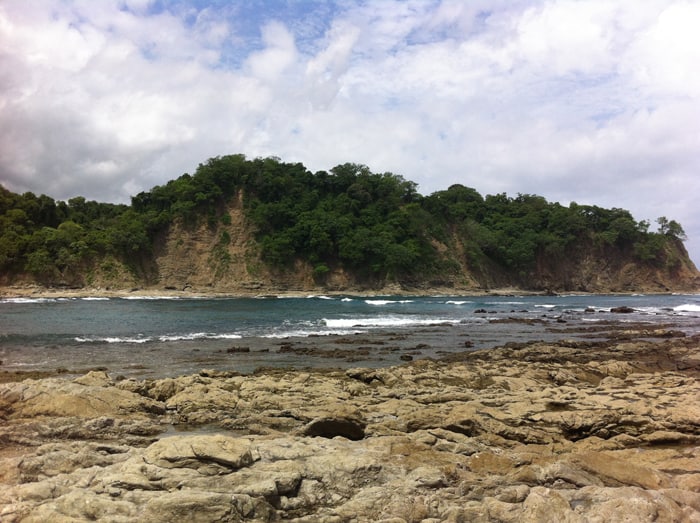
Paco kept telling us not to do anything, so I held my paddle in the air as the boat veered left in shallow water and fell over, dumping Nadia onto the beach laughing.
We staggered ashore and exchanged high-fives all around.
Rewinding time, I was surprised to find in the notes I had taken earlier after talking to Ticos Surf School partner Pablo Sanchez, who turned 36 today, that he had an almost eerie answer to my question that about whether he knew any stories about kayaking to Isla Chora that were funny, surprising or scary.
Pablo said he doesn’t want to categorize anyone by nationality, but there were some Italians who came here once who didn’t want a guide, didn’t want a lot of advice, just wanted to rent a boat to paddle out to the island.
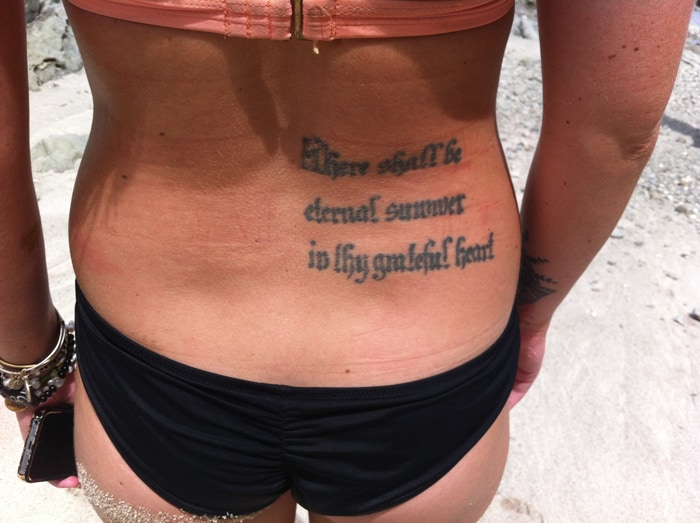
“If someone rents a kayak, we always tell them how to get there, a little briefing to explain to people how to do it,” Pablo explained in excellent English, “and they said, ‘No, no, we know how to do it, tranquilo.’ And they returned swimming. They lost the kayak, because they hit the reef, it turned over.
“It’s a matter of, it’s easy, but if you don’t listen to the experts, even with easy waves and such a pretty place, you can get into trouble, because it’s nature, and that’s what happened to them. They returned without the kayak. We rescued it, but it was broken.”
Our happy foursome returned safely with both our kayaks, all our stuff and a story to tell, and nothing was broken.
“I kind of got the real conditions of Sámara, with a thunderstorm, rain, rocks falling, people getting tossed,” said Kaitlyn. “But it was beautiful at the same time to see a Tico, Paco, to see the real Tico come out, helping people. That’s what Sámara’s about.”
IF YOU GO
Getting there: Ticos Surf School in Sámara operates daily in front of the popular beachfront restaurant Lo Que Hay.
Cost: We paid $35 each for kayaking, snorkeling, fruit and water.
What to bring: Apply sunscreen and wear clothes to get wet in; don’t worry about insects. A waterproof bag is essential if you want to bring phone, camera or wallet. Bring as little as possible.
More info: http://www.ticossurf.com

